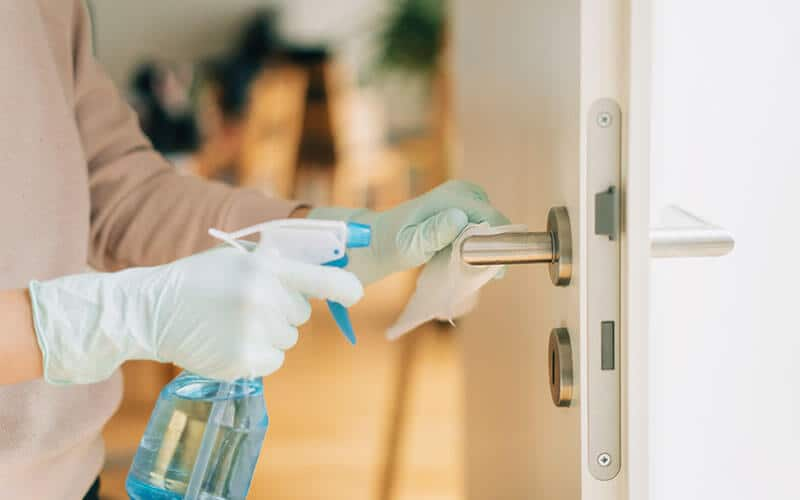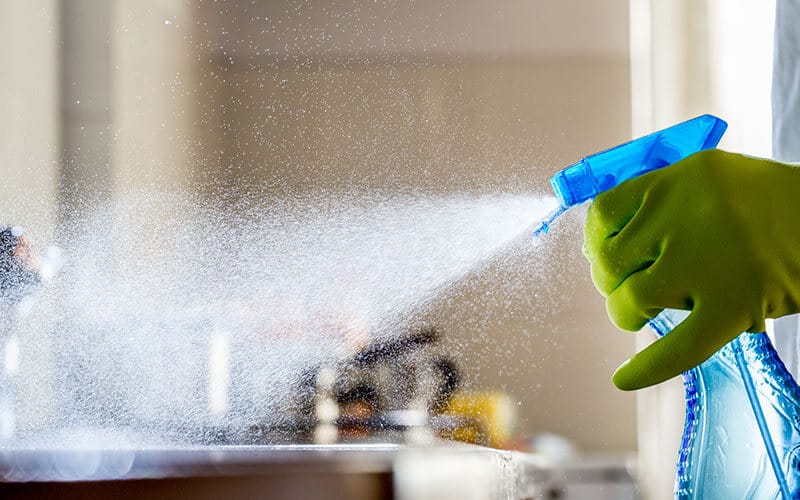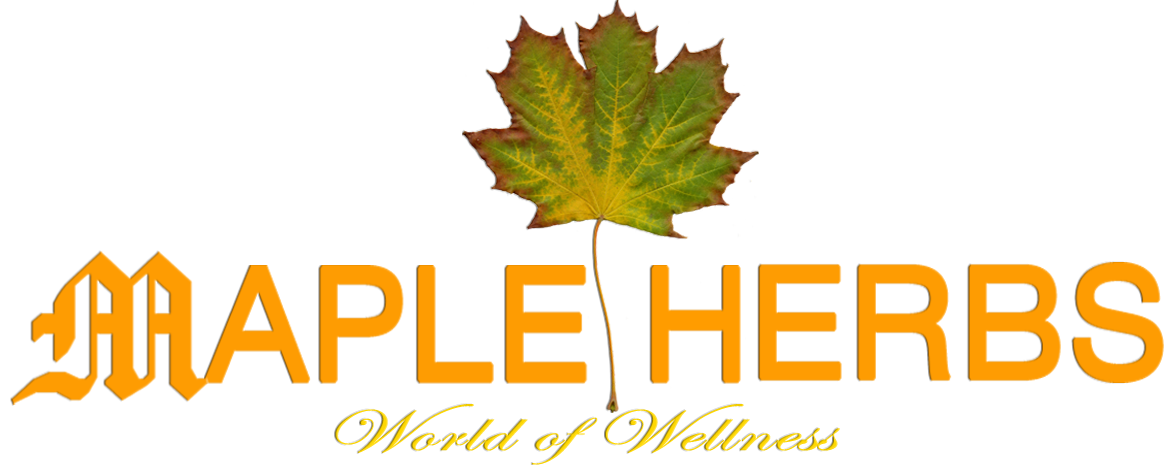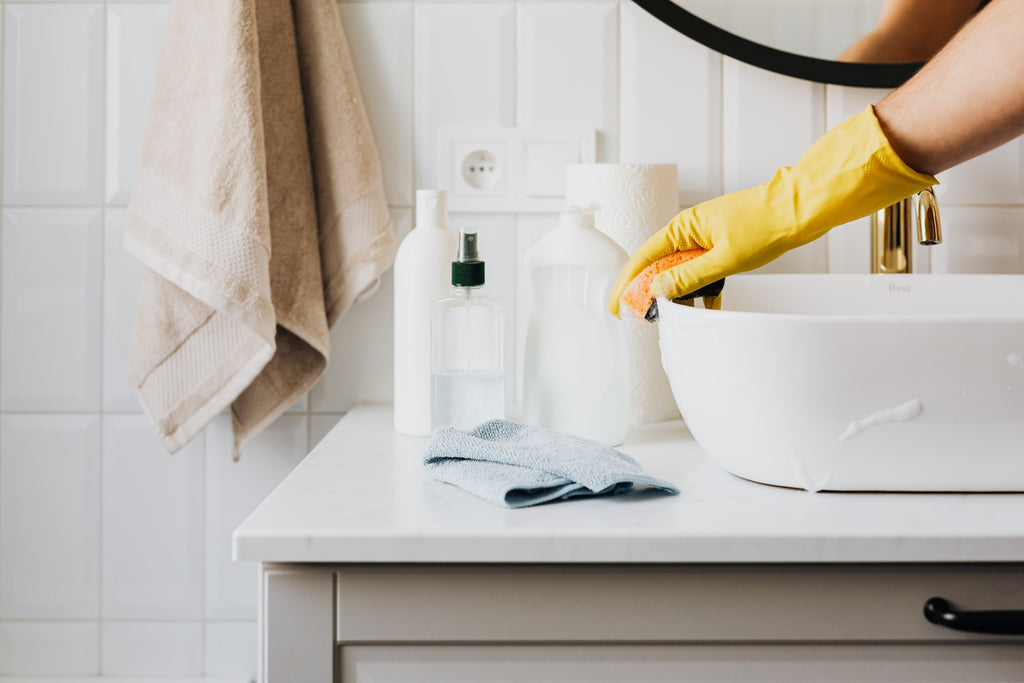Authored by Trombyak Ghosh.
With demand for cleaning supplies at an all-time high, it can be deflating to head to your grocery store, all suited up in your mask, only to find an empty space where the items you were looking for once sat. If it has been a struggle to find the coveted Clorox spray or Lysol wipes in stores or online, getting creative with what you already have at home might be a good option—and sometimes the only one.
Why is Disinfecting Important?
Good hygiene has always been important—but right now, a thorough cleaning is about much more than gleaming countertops. Even if you are practicing social distancing, it’s more important than ever to ensure that you’re washing your hands often and wiping down surfaces after each use. Disinfecting can inactivate viruses on inanimate surfaces within a minute.

We don’t always think about how often we interact with surfaces and items around us, but making sure that we are cleaning and disinfecting as often as necessary is essential for preventing germs and other unwanted viruses and bacteria from living in our homes, according to The Centers for Disease Control (CDC).
Make sure you’re thoroughly cleaning high-contact surfaces, including:
- Doorknobs
- Countertops
- Light switches
- Handles
- Desks
- Toilets
- Faucets
- Sinks
Are Homemade Disinfectants Safe?

Yes! Homemade disinfectants are safe to make and use. There are a handful of different active ingredients that can act as a base for a household disinfectant, all of which are common household finds. These active ingredients focus not just on surface cleaning, but on making contact with germs and killing bacteria, especially since some viruses can live on surfaces for several days.
These include:
- Bleach
- Rubbing/Isopropyl Alcohol (at least 70% alcohol)
- Hydrogen Peroxide (3%)
Be sure to follow all instructions on labels to safely and carefully handle any chemicals you come in contact with.
How Do You Make Your Own Homemade Disinfectant?
There are plenty of great options for making your own homemade disinfectant that only take a few minutes to make. Not sure where to start? The CDC currently recommends a bleach-based solution for tackling hard non-porous surfaces.
- Bleach
- Water
- Measuring Cups
- Spray Bottle
- Funnel
- Gloves (optional)
Step by Step: DIY Disinfectant Spray
- Put on your gloves or wash your hands in preparation
- Measure out 4 cups (1 quart) of water
- Carefully measure out 4 teaspoons of bleach to add to the water
- Use a funnel to avoid spilling excess liquid and pour into spray bottle
- Make sure solution is mixed and cap the bottle
And voila! This solution should have a contact time of at least a minute before wiping it off the surface being cleaned. If you want to make a larger batch of disinfectant, use 1/3 cup of bleach for every gallon (16 cups) of water.
This can be a cost-effective option as well, as several batches of disinfectant can be made from one bottle of bleach and most of the items needed are everyday items you can find at home.
How Do I Make Homemade Disinfectant Wipes?
Already made disinfecting spray, but want to disinfect other surfaces without using bleach? Homemade alcohol-based disinfectant wipes can be just as easy to make!
What Do You Need?
- Rubbing Alcohol (containing at least 70% alcohol)
- Hydrogen Peroxide (3%)
- Paper towels
- Tupperware or other storage container with airtight lid
- Container for mixing
- Measuring cups
- Essential oils (optional)
While the essential oils are completely optional to add, some essential oils, such as bergamot, eucalyptus, thyme and cinnamon, will add a pleasant smell to your homemade wipes.
Step by Step: DIY Disinfectant Wipes
- Mix 3 cups of alcohol with ¾ teaspoon hydrogen peroxide in mixing container
- Add essential oils to mixture to desired level of fragrance
- Pour 2 cups of the mixture into the storage container
- Take 40-50 paper towels and fold them in half
- Place folded paper towels in the storage container with the mixture
- Place airtight lid on the container and swirl the mixture around, making sure to fully saturate the wipes
- Open container and pour remaining 1 cup of mixture onto the paper towels
- Seal the lid until ready to use
There should be excess liquid at the bottom, to make sure that they stay moist over long-term use. Like the spray, these homemade disinfecting wipes can be used on hard non-porous surfaces and even for wiping down phones and other electronics, constant contact items that are often overlooked.
Making some of these homemade supplies when the commercial option has been scarce is a helpful way to follow health guidance and have some added peace of mind.
Meanwhile, remember that cleanliness is only part of the equation. To optimize your immune defenses, get enough sleep, ensure you’re eating a balanced diet, exercise and keep stress under control.
Reference: Life Extension.com






















